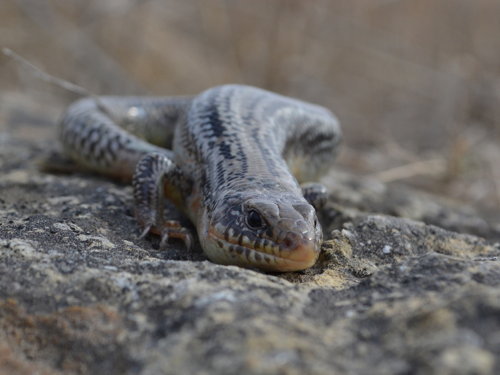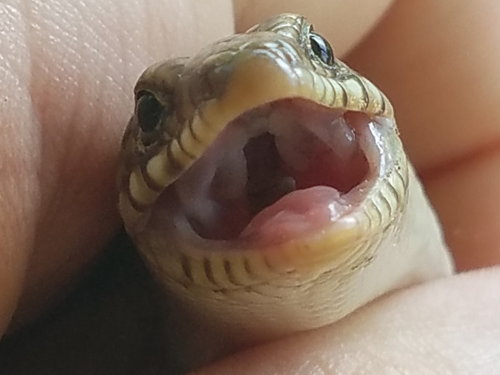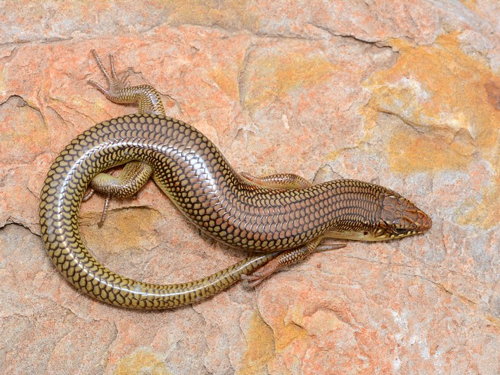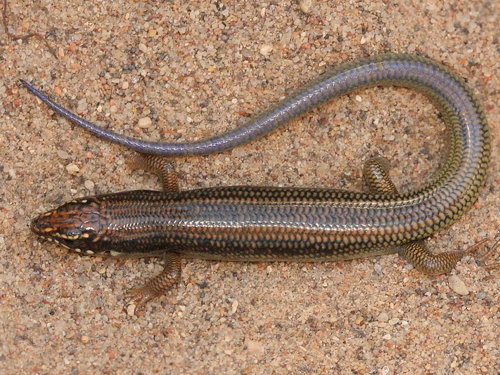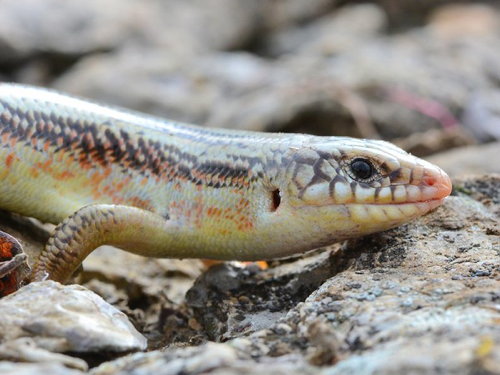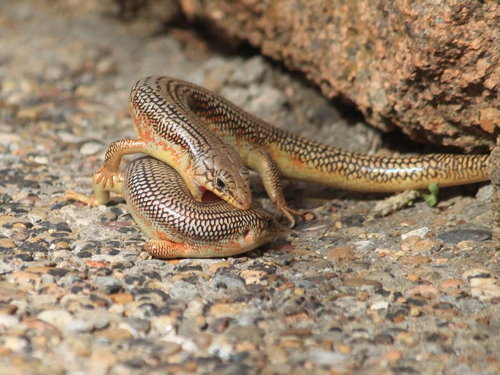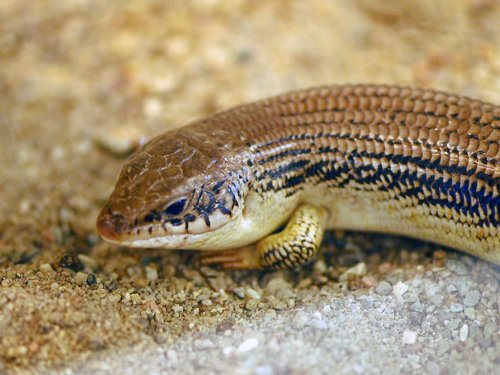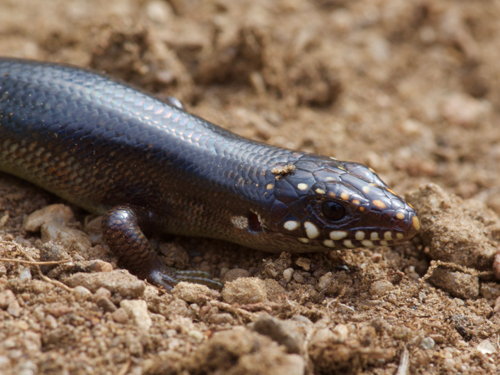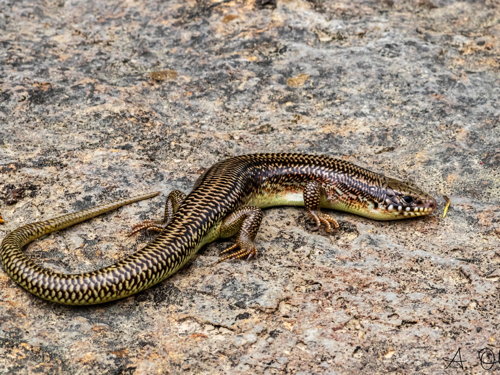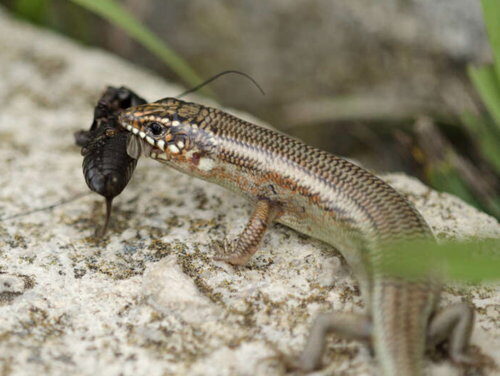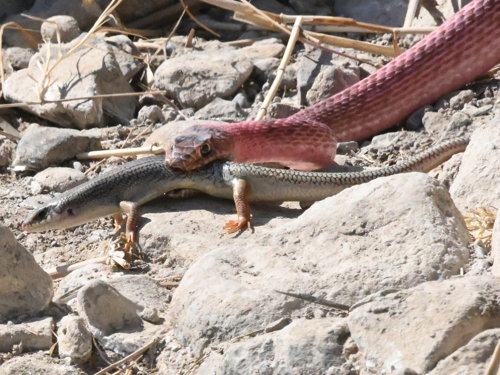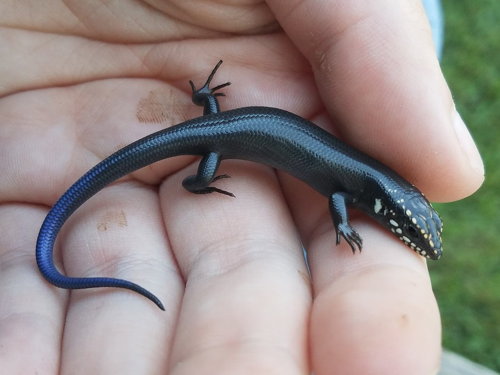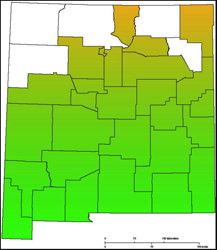Great Plains Skink
Scientific name: Plestiodon obsoletus
Type: Reptile
Family: Scincidae (Skinks)
Size: up to 13 inches (total length)
Weight: 0.5 – 1.5 ounces
Life Span: approximately 3 years
Physical Description
The Great Plains skink is a large, shiny lizard with a stout body, short limbs, and a long, thick tail. Its basic coloration is tan, cream, gray and/or olive with dark markings. The legs and tail is often tinted with yellow and there may be orange spots on the sides of the body. Overall, the scales of this skink are large, rounded and smooth. Those on the sides run diagonally.
Adult males and females look alike, though males tend to be a bit bigger. On the other hand, juveniles are black with spots on the head and a bluish tail. A young Great Plains skink keeps these colors for up to a year.
Great Plains skinks are larger and lighter in color than the many-lined skinks which are also found in the local area. In addition, the Great Plains skink does not have stripes.
Great Plains Juvenile
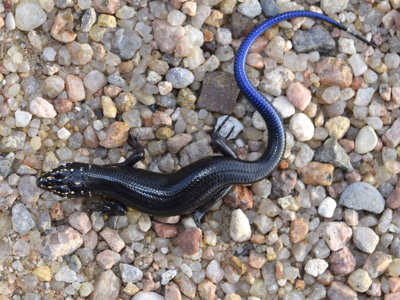
Great Plains Adult
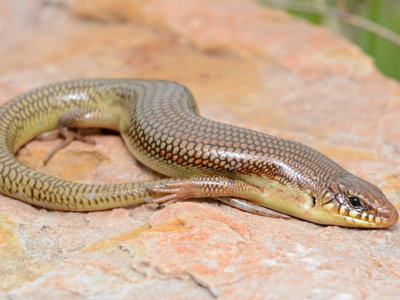
Many-lined Skink
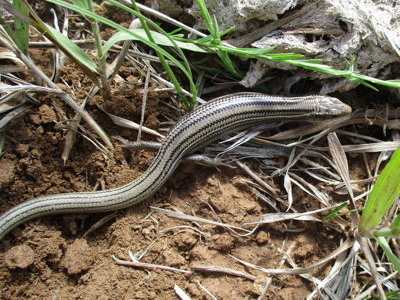
Range and Habitat
The Great Plains skink is very common across what is known as the “Great Plains” — northeastern Colorado, southern Nebraska, southwestern Iowa, western Kansas and Missouri, eastern Arizona, most of New Mexico, Oklahoma, and Texas, and northern Mexico.
These skinks live in open plains, grasslands, conifer forests, or mountain foothills near water such as irrigation ditches and sometimes at elevations as high as 7200 feet.
Diet
The Great Plains skink diet consists of a variety of insects including grasshoppers, caterpillars, crickets, roaches, and beetles. In addition, these skinks eat spiders, snails, and small lizards, depending on what is available. Great Plains skinks find their prey underground by smell.
Behavior and Social Life
The Great Plains skink is a ground-dweller that is primarily active during the day. It shelters in burrows or under logs, rocks, leaf letter, or other debris and usually only comes out on mild mornings or on overcast days. They hibernate underground during the cooler months.
They are very fast and will zigzag through rocks and surface debris to avoid capture. Their main defense against predators is a type of camouflage that covers up their smell. However, if caught, their tail will detach and twitch as a distraction. They will also not hesitate to bite if cornered. A skink will grab a small piece of skin and thrashes around until it leaves a painful laceration.
Great Plains skinks communication through touch and smell.
Hanging out
Hiding in Grass
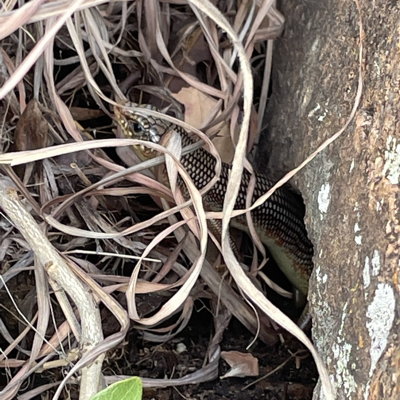
Hiding under Rock
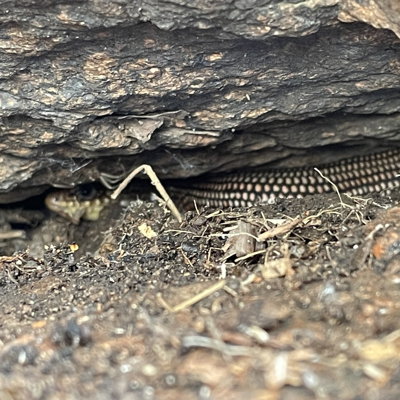
Hiding in Hole
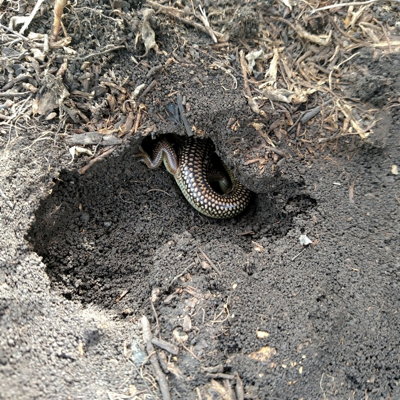
Life Cycle
Great Plains skinks mate during April and May. The female lays up to 24 eggs in an underground nest, or under a rock ledge or log. The female will stay with the eggs to guard them until they hatch, about 4 weeks later. Although there are some reports of the mother staying with the young for a while, the hatchlings are usually on their own to forage for food and to avoid predators.
Finding Mother and Eggs
Ecological Role
Great Plains skinks serve both as a food source for their predators (snakes, birds of prey, and mammals) and as a predator of insects and other invertebrate populations in their environment.
Interactions With Humans
Great Plains skinks are appreciated by man for the large number of pest insects and arachnids that they consume. However, they harbor a large number of chiggers which can be transmitted to humans.
Interesting Facts
- Skinks are loners, only coming together during mating season.
- Great Plains skinks have keen a sense of sight and of smell.
- The Great Plains skink is one of the largest in the Plestiodon genus.
- Skinks are extremely shy and elusive making them very difficult to observe.
- They can be seen by remaining still and carefully surveying areas in areas that have a combination of rocks and shrubs.
- They are most often seen foraging in the late morning and late afternoon.
- Skinks are often confused with snakes because of their short necks, small legs, and snake-like body motion.
- Skinks have small sharp teeth that can slice through smaller prey.
- The tail of a skink will regrow if it is broken off, but never as long as it was originally.
- Skinks will sun themselves on rock or tree limbs when they need to warm up.



